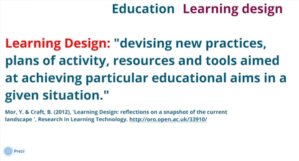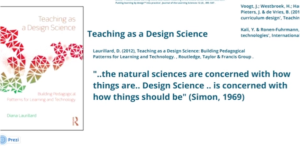OLDSMOOC was launched today and as you would sort of expect, Cloudworks crashed under the load of people attempting to join the event. I was fortunate. I got in early enough to be one of the 100 people who could view the OU hosted event – but those arriving later, or trying to get in via Youtube or Cloudworks were disappointed. Much frustration was vented on Twitter, which the OLDSMOOC team, to their credit, did their best to contain.
It’s worth noting though that this is not the first MOOC to start in this fashion. Change11 was the same and that turned out to be a very worthwhile MOOC from my perspective. So it is early days for OLDSMOOC, although I do wonder why they have gone for such a complex and prescriptive design. We now know from other connectivist MOOCs that simplicity is the key to MOOC design – or at least apparent simplicity for the participant, which is not easy to achieve. I know from experience with FSLT12 that it is certainly not simple from the designer’s perspective – and of course the more people you get signing up, the greater the risk of the system crashing. So hats off to Stephen Downes and George Siemens for managing more than 2000 participants in the first connectivist MOOC in 2008 (CCK08), when they didn’t even anticipate the numbers who attended. An amazing achievement looking back on it.
The OLDSMOOC Launch was presented by Yishay Mor – who spoke to this Prezi presentation http://prezi.com/b44jwdgvs8nl/olds-mooc-introduction/
OLDSMOOC is thought by the conveners to be different because it is a project-based MOOC. The intention is that participants will work together in groups to produce a learning/curriculum design.
This of course raises questions such as What is curriculum? What is learning? What is design? and the presentation took us through various definitions of design. Perhaps the most recent definition of design quoted was from Grainne Conole’s forthcoming book:
And another recent definition from Mor and Craft
A point worth noting for our US colleagues is that learning design is considered to involve different thought processes to instructional design, which is thought to be a more linear process. (09-01-13 See Update from Yishay Mor at the end of this post)
According to Diana Laurillard teaching should be seen as a design science….
…..which prompted George Roberts on Twitter to ask the question
What is a “scientist” in the sense used in ‘learning as a “design science”‘ by @yishaym in #oldsmooc launch? Broad, narrow, or commonsense?
There was only one comment made in the presentation that I felt I could strongly resonate with and that was by Yishay Mor when he said
‘Design practice helps teachers share their practice’
This makes sense to me in terms of the work I have been doing with Roy Williams and Simone Gumtau on emergent learning, where we believe that drawing footprints to describe the relationship between prescribed and emergent learning in any given course, helps to raise awareness of learning issues and establish a dialogue around those issues. For further information see Footprints of Emergence.
I will probably not be working on a project for OLDSMOOC. My interest in curriculum design at the moment is related to prescribed, emergent and embodied learning – perhaps there is some overlap, but I think we (i.e. Roy, Simone and I) are probably coming at curriculum design from an alternative perspective…….but I will be following OLDSMOOC from the sidelines and am interested to see how it works out in terms of its own design intentions as a MOOC.
——————————————————————–
090113 Re Instructional design – this is a message from Yishay Mor via Twitter
Hi @jennymackness, I actually claimed that #instrcutionaldesign is more linear, and #learningdesign more messy / iterative #oldsmooc


